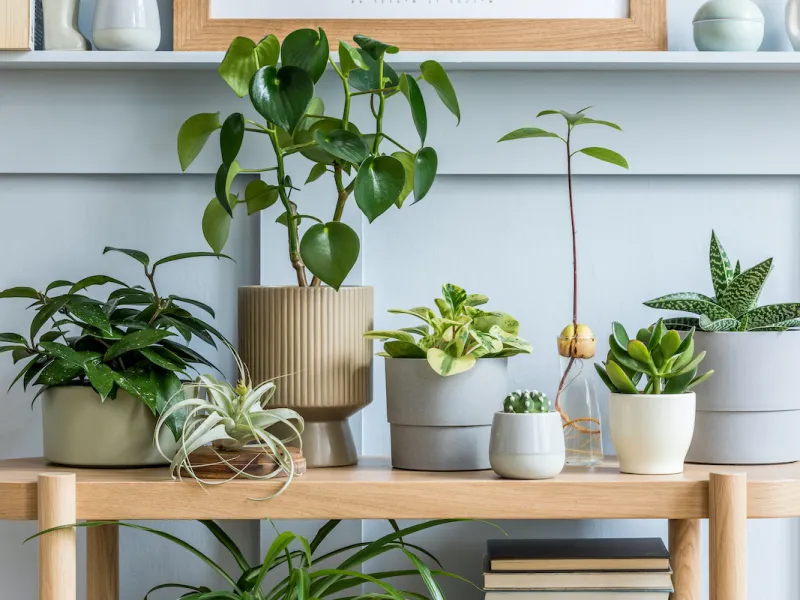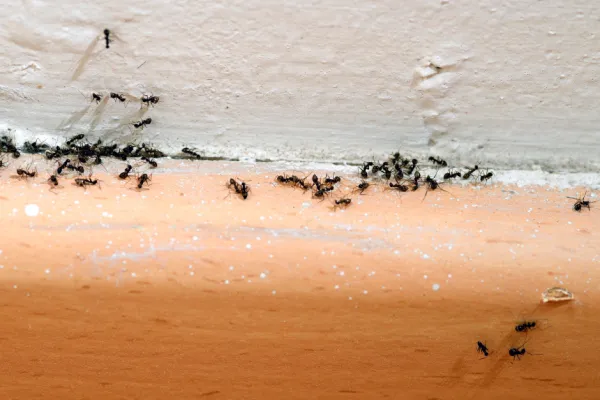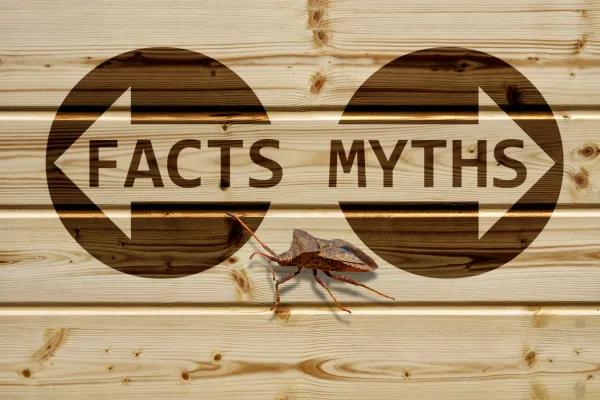How to Protect Your House Plants from Pests

Decorating with houseplants is a wonderful way to make your living space feel brighter and airier. Plus, plants are proven to improve mental health, which is especially helpful right now. Reducing stress levels, boosting mood and productivity, and improving indoor air quality are just a few of the benefits plants offer. But there is one glaring downside to having plants inside your home: pests. Luckily, there are simple pest control and prevention measures that proud plant parents (both experienced and novice) can take to protect your natural decor.
Keep Pests from Picking on Your House Plants
Know Your Enemy: 5 Pests Plant Parents Should Know About

Mealybugs
Mealybugs are one of the most common (and detrimental) pests when it comes to plants. They can be easily identified, as they closely resemble cotton with their fuzzy, white appearance. Succulents, cacti, ferns, and orchids are particularly susceptible to this pest, so make sure to keep a watchful eye. To rid your plants of mealybugs, first attempt to knock them off the plant with a good shake or spray of water. If necessary, try saturating your plant with a mixture of 1 part rubbing alcohol and 3 parts water several times weekly until existing bugs turn brown and you are positive that eggs are no longer hatching.

Scale Insects
During their adolescent stage, these small insects will find the perfect spot on a plant stem to attach before covering themselves with a protective, exterior shell. As a result, they are often mistaken for natural growth imperfections. Their sturdy exoskeleton makes them undeniably hard to get rid of, though. Similar to mealybugs, scale insects suck the sap and nutrients out of the plant until it eventually wilts and dies. If you notice these on your plant, first try to rub or pick off as many as you can with a gentle tool or by hand. Dissolve any remaining bugs by dabbing them with a cotton ball saturated in rubbing alcohol.

Fungus Gnats
Next up is the dreadedfungus gnat. Though these pests aren’t harmful to humans, their tendency to swarm is rather disturbing. Not to mention, once the soil fungus they enjoy feeding on runs out, they will begin feeding on the roots of your plants. The best way to control fungus gnats is to clean up decomposing organic materials and reduce the amount of moisture locked into the soil with the Bottom Watering Method. You can also try watering the soil with a mixture of 1 teaspoon of Pine-Sol and 2 quarts of water for several weeks or adding activated nematodes (microscopic, predatory worms) to the soil to eat the larvae. Laying out sticky gnat traps is typically ineffective against these pests, as it doesn’t alter the conditions of the soil, which is necessary to break the cycle.

Spider Mites
Are the webs on your plants signs of spider mites or an indication that a good dusting is needed? Sometimes, the two can be hard to differentiate. Spider mites are another stubborn type of pest that, as the name suggests, weave harmful webs all over your plants. As with any infestation, be sure to quarantine the affected plant away from any others you may have. Your best bet is to place affected plants under a lukewarm shower weekly and give them a thorough rinsing, as spider mites hate moisture and humidity. This will gradually help reduce the spider mite population on the plant. In between showers, make sure to mist the plant daily to keep humidity levels high.

Aphids
Aphids are tiny insects that appear as green, white, yellow, and even black spots all over the plant. They too feed on the nutrients inside plants’ stems and leaves. Unfortunately, these pests also are prolific and can cover an entire plant in just a matter of days. Luckily, they are one of the easier pests to get rid of, as they are soft-bodied. Consistently giving your plant a good blast of water all over can usually take care of these bothersome bugs.
Other pests that are commonly found on house plants are broad mites, leaf miners, springtails, thrips, and whiteflies. With so many potential pests threatening your plants, it can be overwhelming to know how to prevent and get rid of them. With a few tips from our local exterminators, however, you can reduce the risk of an infestation occurring on your indoor plants.
How to Prevent a Pest Infestation on Your Indoor Plants
#1 – Frequently Inspect Your Indoor Plants
The best chance of extending the life of your houseplants is by catching pests early on! With this in mind, you should inspect your indoor plants weekly, especially when watering. You don’t want to find out you have a pest problem after they have already wreaked havoc on your plants. If you notice insects flying around the plant or hiding on the undersides of the leaves, your plant is likely suffering. Other tell-tale signs include a wilted or dehydrated appearance, excessive loss of leaves, the presence of stick or slimy substances, and damaged, distorted, or patchy-colored leaves. While it’s best to avoid moving your plants between the inside and outside of your home, oftentimes it is necessary so that plants can have exposure to the temperatures, sunlight, and humidity necessary for growth. Just be sure to give a thorough inspection to plants that have been sunning outside!
#2 – Always Check New Plants Before Home
One of the most important yet commonly overlooked steps in plant care is a thorough check before bringing it home. As a general rule of thumb, avoid buying plants that look unhealthy. The same can be said for fresh-cut florals and purchased produce, which should be investigated and washed before bringing inside. Leave no leaf unturned as you are inspecting for red flags, paying careful attention to the stems, soil, and leaves. If you don’t see any visible damage to the plant, it is probably okay to move forward with your purchase. Still, you should isolate any new plants from those already inside the home for 5 to 7 weeks to prevent the spread of any pests that you may have missed. Since you are already performing regular inspections of your plants, you will be able to monitor the progress of your plant. Once it is all clear, you can relocate it to join the rest of your indoor garden.
#3 – Avoid Using Contaminated Soil
Depending on growth levels, plants typically need to be repotted every 12 to 18 months and the last thing you want to do is adversely affect your plants’ growth as you are doing so. It is essential to check any bags of potting soil for potential pests beforehand. To be on the safe side, North Dakota State University suggests baking moist potting soil in the oven at 180 degrees Fahrenheit for half an hour to effectively “sterilize” the soil. If you have any potting soil leftover, be sure to store it in an airtight container. If you later notice pests plaguing the soil of your freshly potted plants, try to let the soil dry out as much as possible, with less frequent watering. In the case of fungus gnats, it can be helpful to drain excess water by placing large rocks near the bottom of the container, and of course, an exit point. You should also try leaving a half-inch of sand on top of the soil for several weeks, or until the gnats are gone.
#4 – Contact Your Local Exterminators
Because pests have no natural predators inside the home, infestations can rapidly get out of hand. Even if you provide your plant with the perfect amount of care, certain pests can mean unavoidable demise. Palmetto Exterminators offers free pest inspections to determine the most effective pest management solutions for your needs. With an integrated pest plan in place, you can continue to nurture your green thumb in peace. Give Palmetto Exterminators a call today to learn more!


